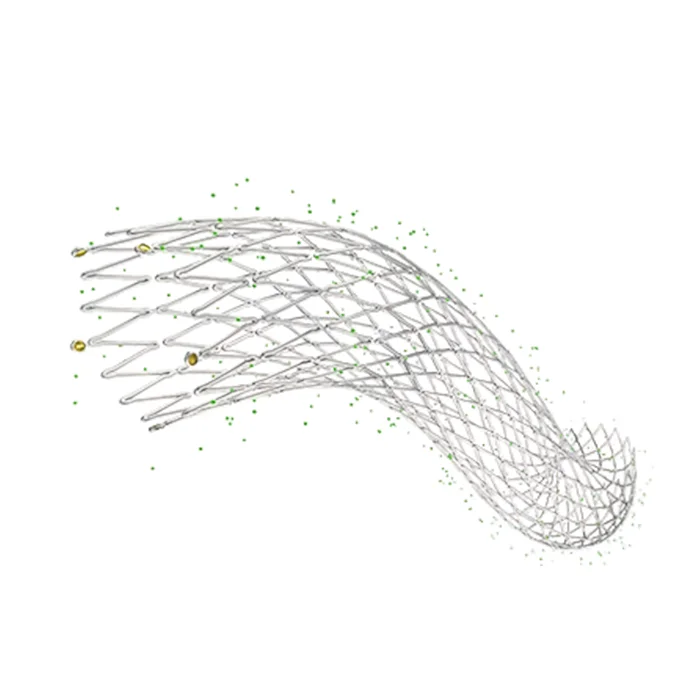Peripheral Drug Eluting Stents: A New Method for Efficient and Safe Treatment of Vascular Injuries

In the realm of vascular medicine, the treatment of vascular injuries has always been a challenge. Traditional methods, such as surgical bypass or balloon angioplasty, often carry the risks of complications and restenosis. The advent of drug-eluting stents (DES) has revolutionized the landscape of vascular injury treatment, offering a more efficient and safer alternative. Among the various players in this field, Barty Medical Technology has emerged as a leader, introducing innovative peripheral drug eluting stents that are designed to address the specific needs of peripheral vascular injuries.

The Rise of peripheral drug eluting stents
Peripheral drug eluting stents represent a significant evolution in the treatment of vascular injuries. Unlike bare-metal stents, which can often lead to restenosis due to excessive tissue growth, DES release drugs that inhibit the proliferation of smooth muscle cells, thus reducing the risk of restenosis. These stents are coated with drugs such as paclitaxel or mTOR inhibitor, which are slowly released into the vessel wall, providing long-term therapeutic benefits.
The Role of Barty Medical Technology
Barty Medical Technology has been at the forefront of innovation in the field of peripheral drug eluting stents. Their stents are designed with precision, incorporating advanced materials and coating technologies to ensure optimal drug delivery and vessel healing. The company's stents are also notable for their flexibility and durability, allowing them to adapt to the unique anatomies of peripheral vessels.
One of the key innovations of Barty Medical Technology is its proprietary drug-eluting coating technology. This technology ensures a controlled and sustained release of the therapeutic agent, minimizing the risk of adverse effects and maximizing the therapeutic benefits. Additionally, the company's stents are designed with biocompatible materials that minimize the risk of inflammation or rejection by the body.
Clinical Applications and Outcomes
The clinical applications of Barty Medical Technology's peripheral drug eluting stents are vast. These stents are commonly used in the treatment of peripheral artery disease (PAD), a condition that affects millions of people worldwide. PAD occurs when the arteries in the legs become narrowed or blocked, restricting blood flow and causing pain and discomfort. By implanting a drug-eluting stent, physicians can restore blood flow to the affected area, reducing symptoms and improving quality of life.
Multiple clinical studies have demonstrated the efficacy and safety of Barty Medical Technology's peripheral drug eluting stents. These studies have shown significantly reduced rates of restenosis and improved clinical outcomes compared to traditional treatment methods. Additionally, the stents have been shown to be well-tolerated by patients, with minimal side effects and complications.
Challenges and Future Prospects
While Barty Medical Technology's peripheral drug eluting stents have shown promising results, there are still challenges that need to be addressed. One of the main challenges is the need for long-term follow-up and monitoring to assess the durability and safety of the stents over time. Additionally, there is a need for further research to explore the optimal drug combinations and release kinetics that can maximize therapeutic benefits while minimizing side effects.
Looking ahead, Barty Medical Technology is poised to continue its leadership in the field of peripheral drug eluting stents. With ongoing research and innovation, the company is likely to introduce even more advanced stents that address the evolving needs of patients with vascular injuries. Future stents may incorporate novel drug delivery systems, biomaterials, and imaging technologies to further enhance their performance and safety.
Conclusion
Peripheral drug eluting stents, especially those developed by Barty Medical Technology, represent a significant leap forward in the treatment of vascular injuries. Their ability to provide controlled and sustained drug delivery, coupled with their excellent biocompatibility and durability, make them a valuable tool in the armamentarium of vascular medicine. With continued research and innovation, these stents have the potential to further improve the lives of patients with vascular diseases, offering them a safer and more effective treatment option.
lena
Trueland1589@outlook.com

